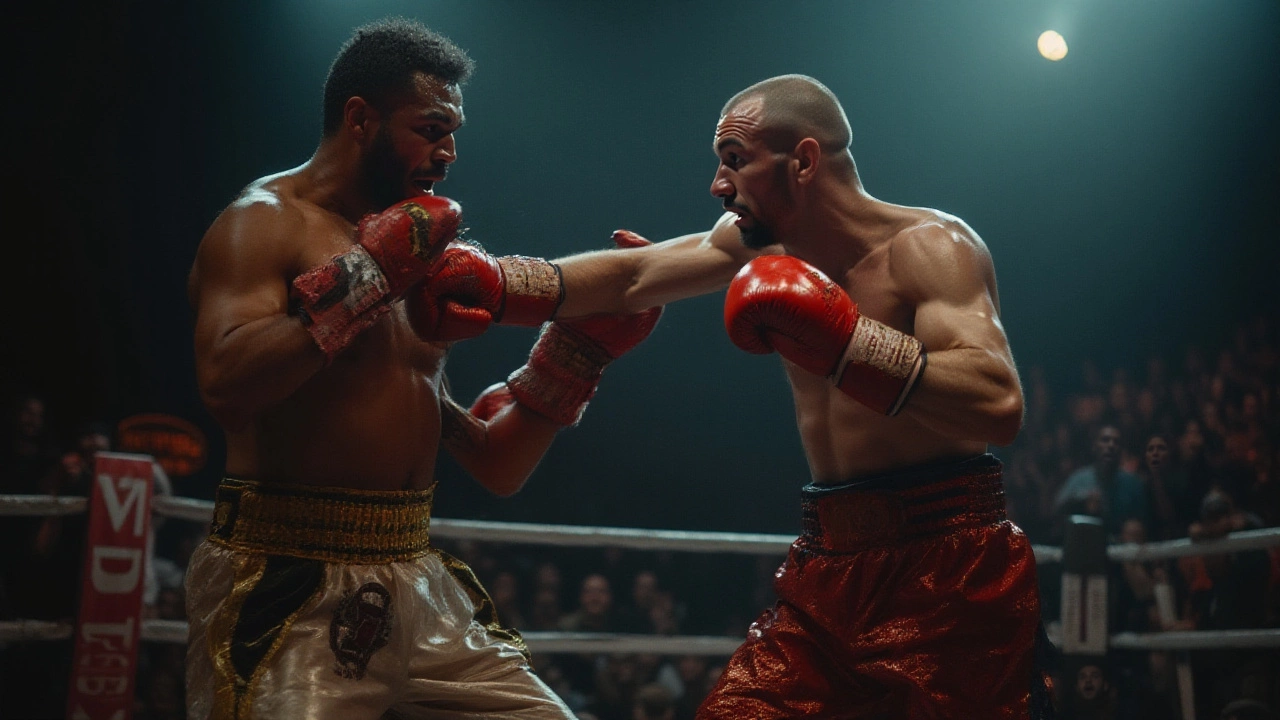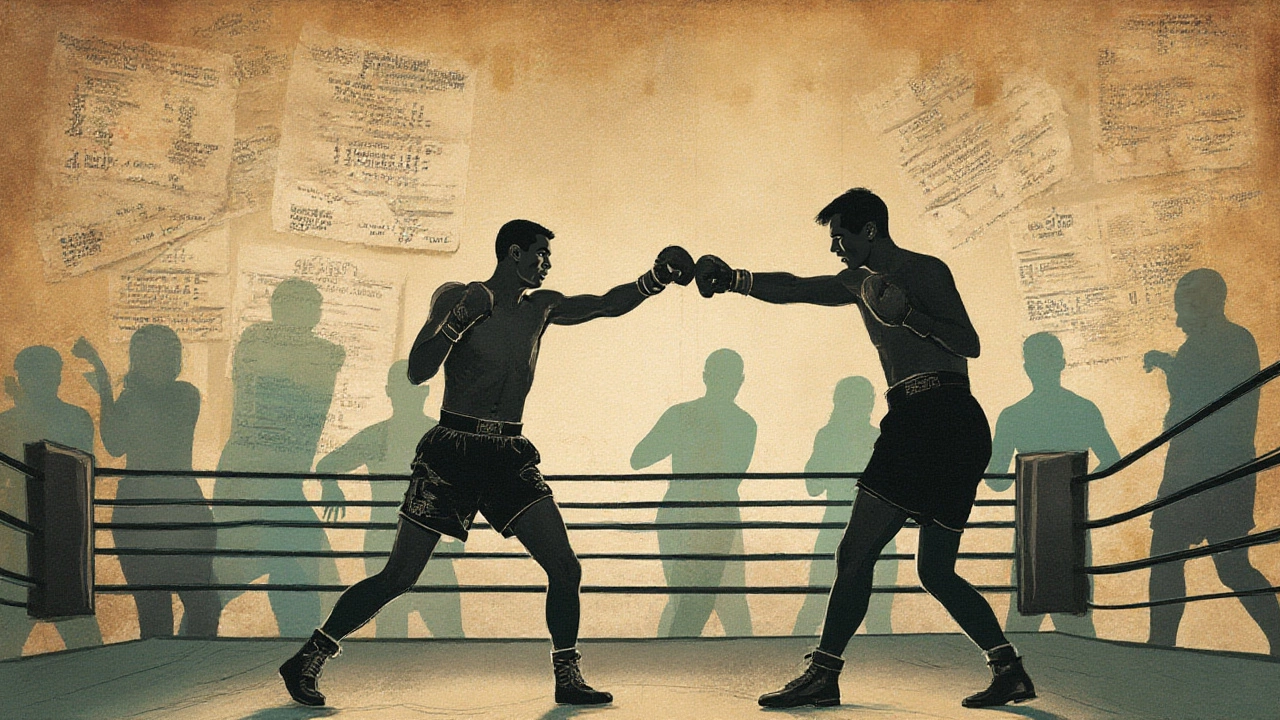Illegal Punches in Boxing: Rules, Risks, and Famous Fights

Did you know some of the most legendary boxing matches have been shaped by punches that aren’t actually allowed? It’s not a secret handshake, but the rules about what you can and can’t do with your fists sort out the pros from the dirty fighters. Ask any ringside judge and they’ll tell you—one illegal punch can change everything. I always figured boxing was just about how hard you could hit, but once you look under the hood, it’s packed with some pretty surprising dos and don’ts. So why do some punches cross the line? What happens when you break those lines? Let’s take a swing at the rules, the risks, and the legends who got caught up with the wrong punch at the wrong time.
Understanding Illegal Punches: The Rules and What Gets You Penalised
You might think the only thing stopping two boxers in the ring is their own stamina, but actually, the official rules are loaded with very specific boundaries—some you might’ve guessed, others are a bit more eyebrow-raising. According to the Association of Boxing Commissions, an illegal punch is basically any strike that breaks the agreed rules of the match. The most famous no-no? Punching below the belt. It’s the oldest rule in the book—literally—and it comes down to protecting fighters from unnecessary harm. But there’s a lot more to watch out for if you want to stay in the clear.
Here’s a quick list of the punches and actions referees won’t stand for in pro boxing:
- Rabbit Punch: That’s a hit to the back of the head or neck, named because it mimics the way hunters once killed rabbits. Extremely dangerous and strictly banned—one freak punch can cause severe injury, even death.
- Low Blow: Any punch that lands below the belt line. Not only is it painful and unfair, but keep doing it and you could get disqualified.
- Rabbit Punch: Multiple rules actually highlight this because of its risk—it disrupts the spinal cord and can knock someone unconscious.
- Hitting On The Break: Fighters need to back off when the ref calls for a break. Throwing a punch in that moment is sneaky and illegal.
- Striking When Down: If one knee or glove is on the mat, it’s hands off until the fighter’s up again.
- Kidney Punch: Punches to the lower back, close to the kidneys, were banned after studies showed repeated hits there could lead to organ damage.
- Hitting With The Open Glove, Forearm, or Elbow: You won’t see these much in clean fights, but desperate or dirty fighters sometimes try them.
- Holding and Hitting: Grabbing your opponent with one hand and punching with the other is classic foul play.
- Backhanded Punches: Swiping with the back of the hand isn’t just weird looking, it’s banned because of the unpredictability and potential for injury.
- Striking After the Bell: When the round ends, both fighters must back off. Landing a punch after the bell rings is an instant penalty.
If any of this sounds dramatic, just check the penalty list from the British Boxing Board of Control. Refs don’t mess about: one warning, point deductions, and if you’re really pushing your luck, an outright disqualification. In 1997, Mike Tyson’s infamous "ear bite" actually followed a series of illegal punches and roughhousing—that fight ended in disqualification and one of boxing’s biggest controversies. Ironically, dirty tactics don’t always go undetected, and sometimes the crowd catches them even before the judges do.
There’s a pretty eye-opening
| Type of Illegal Punch | Average per Match | Notes |
|---|---|---|
| Low Blows | 2.1 | Most common across all weight classes |
| Rabbit Punches | 0.7 | Almost always penalised |
| Kidney Punches | 0.5 | More often missed by refs |
| Late Hits | 0.2 | Usually accidental |
The thing is, it’s not always easy for a ref to spot every single illegal punch in real time. That’s where video replays and ringside judges jump in. Still, more than a few fights have gotten heated when a controversial punch slipped through unnoticed—or when a warning felt a bit too harsh. Just think about the Floyd Mayweather vs. Victor Ortiz showdown in 2011: Ortiz headbutted Mayweather, then Mayweather knocked him out while Ortiz seemed unready. Legal? Yes. Sporting? Fans still argue about it years later. The devil really is in the details.
Boxing’s not just about brute strength or flashy style. Knowing where to hit—and where not to hit—can make or break your career. As world heavyweight champ Lennox Lewis once said,
“True strength doesn’t come from fighting dirty. Clean hands, clear conscience.”If you’re hoping to step into the ring or just want to follow the action with a sharper eye, knowing these rules is absolutely crucial.

Why Illegal Punches Happen: Intentions, Instincts, and Momentary Madness
It’s tempting to believe most illegal punches are the work of quick-tempered brawlers or hard-edged boxers aiming to skirt the rules. But actually, illegal punches aren’t always about bad intentions. Sometimes it’s pure adrenaline, bad positioning, or a split-second misreading when fists are flying. When a boxer backs off to dodge a hit and twirls sideways, there’s a good chance a glancing blow will land to the back of their head—illegal, but hardly ever planned. In the heat of the moment, instincts can outweigh game plans, especially when pride or big paychecks are on the line.
But then you have the repeat offenders, the ones who see the rulebook as more of a suggestion. Take Andrew Golota: outrageous talent, but known for landing low blows so often the New York Times called his 1996 fight against Riddick Bowe “a foul-fest.” Bowe won that match after Golota was disqualified—not for one, not two, but for nearly a dozen low blows. Fans still argue over whether nerves or anger were to blame, but it’s a textbook reminder that losing focus in the ring never goes unpunished.
So, is it possible to tell when someone’s breaking the rules on purpose? Experienced trainers and refs usually look for patterns—the same illegal punch thrown multiple times, or a boxer constantly testing boundaries. Occasional mistakes happen even with pros, and referees tend to give warnings first unless an illegal punch is especially dangerous or looks intentional. The moment referees suspect dirty tactics, though, they shift their style—getting closer to the fighters, verbally warning, and halting the match if things get too risky.
Psychologists who’ve studied athletes under pressure call this "red mist"—a temporary state where judgment slips amid stress, excitement, and fatigue. Anyone can lose their head under bright lights, but some boxers stay calmer than others. Sugar Ray Leonard, for example, was famous for never losing his cool under fire, dodging illegal clinches and counters with sly footwork.
On the flip side, certain fights seem doomed to spiral out of control. Think back to 1983, when Billy Collins Jr. was blinded in one eye after Luis Resto’s gloves had the padding illegally removed. That shocking incident wasn’t just about one illegal punch—single acts of rule-breaking often snowball once fighters (or their trainers) start to bend the rules and refs don’t step in quickly enough.
History’s not short on attempts to stamp out these tactics. In big British venues like Wembley or the O2 Arena, ring referees now wear body cams to better catch illegal punches and ensure fair play. Trainers and corner staff are also watched closely, as many dirty moves start with instructions yelled from the sidelines or sneaky tricks between rounds. If a boxer’s team tries to bend the glove straps, over-wrap hands, or encourage roughhousing, those small acts almost always end with an official warning—or worse, a lengthy ban from the sport.
So if you dream about climbing through the ropes someday, here’s a tip: practice clean skills under pressure. Ask your trainer to recreate the most common triggers for illegal punches—like clinch situations, awkward angles, and fatigue rounds—until your habits keep you above board no matter what. The best boxers in history, from Muhammad Ali to Katie Taylor, didn’t just rely on knockout power. They learned to keep cool in chaos and play fair when the bell rang. Dirty fighting might bring a cheap win for a day, but it’ll ruin a career for good.

Protecting Yourself and the Sport: What Every Boxer and Fan Should Know
The rules might sound all about punishment, but there’s a reason for every one of them: safety. No one steps into a boxing ring expecting lifelong injuries. Everything from the shape of the glove to the tightness of the ring ropes is carefully regulated, and illegal punches go right against the heart of that safety-first attitude.
If you spend much time ringside, you’ve probably heard the debate: do penalties really stop dirty punches? The stats say yes, but only partly. The World Boxing Association did a deep dive into fouls and consequences in pro fights between 2010 and 2020. Rings with stricter referees saw 25% fewer illegal blows, but when referees were lenient, fouls nearly doubled. So, if fair fights are your thing, you’ll want to keep an eye on who’s wearing the whistle as much as the ones wearing the gloves.
Fans sometimes underestimate just how dangerous an illegal punch can be. We’ve all seen fighters "shake it off" after a low blow, but rabbit punches or kidney shots are a different league. The spinal cord is exposed at the back of the neck, and even a glancing blow can leave lasting damage. In one British Medical Journal study, they found ring deaths and critical injuries in boxing dropped by half after stricter bans on back-of-the-head shots kicked in during the late 1990s. Sounds medieval, but it worked.
So what about learning to avoid illegal shots, whether you’re sparring on a Saturday or fighting for a belt? Here are some actual field-tested tips from pro trainers and ex-champs:
- Always keep your stance low and wide—this helps you stay balanced and avoid glancing blows to your back or kidneys.
- If a clinch gets messy or someone’s holding on too long, call out to the ref and don’t feel pressured to “fight dirty back.”
- Never turn your back or crouch in a way that tempts opponents to punch a forbidden zone. Stay square, even under pressure.
- When tired, keep your hands up by default—even when breaking off or after hearing the bell. That’s when illegal punches come most often.
- For coaches: drill your fighters in foul avoidance, including how to quickly pull punches if their opponent turns away mid-combo.
- As a fan, be vocal but fair—call out dirty tactics but respect referees who keep things honest. Boxing depends on respectful spectators as much as skilled fighters.
More boxers than ever have begun to share their own stories about foul play. Natasha Jonas—one of Britain’s proudest champions—spoke at a 2024 public forum, saying,
“Winning clean means everything. I won’t let a dirty shot define my career, and I don’t want future boxers on highlight reels for the wrong reasons.”Her attitude shows just how much the sport is changing, making sure fighters, refs, trainers, and fans all play a part in keeping things safe and fair.
And if you’re just tuning in for the next big title fight, see if you can spot when someone tests the rules. It’s not always about drama—sometimes a perfectly-timed warning, or a champion refusing to return fire with a foul, tells you more about a fighter than any slow-motion knockout ever will. So don’t just watch the hits. Watch the hands, the glances, and the rules. The soul of boxing has always been about what happens inside the rules, not outside them.
